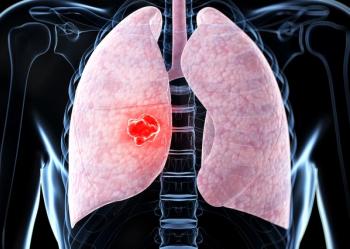
Genomic Alterations May Impact Poorly Differentiated Thyroid Cancer Outcomes
ABCA12, CLIP1, and ATP13A3 somatic mutations appear to correlate with a vascular invasion phenotype in patients with poorly differentiated thyroid cancer.
Among patients with poorly differentiated thyroid cancer (PDTC), somatic mutation genes correlated with the tumor’s clinicopathological characteristics, and transcription analysis highlighted the possibility of immune escape, according to findings from a study published in Scientific Reports.
When analyzing 100 genes in 15 patients with somatic mutations via one-way ANOVA and Fisher’s exact test, 3 had 6 clinicopathological phenotypes that significantly correlated with 21 genes. Additionally, analysis per Fisher’s exact test highlighted 4 phenotypes associated with 9 genes (P <.05).
In particular, investigators noted that ABCA12, CLIP1, and NRAS were associated with trabecular patterns. Additionally, ABCA4 and SLIT3 correlated with insular patterns, while ABCA12, ATP13A3, and CLIP1 genes were associated with vascular invasion status. Investigators observed that INTS1 and RYR1 genes influenced the capsular invasion status, while the SORL1 gene correlated with hypertension status.
“Given the significant correlation observed in the association analysis between ABCA12, ATP13A3, and CLIP1 somatic mutations and vascular invasion, these somatic mutations may hold promise as potential biomarkers for predicting the recurrence or metastasis of PDTC following surgery,” the study authors wrote. “Among the observed ABCA12 mutations in 3 patients, the presence of these mutations suggests a potential gain-of-function effect on cell motility.”
The study assessed 15 patients with PDTC originating from follicular thyroid carcinoma (FTC) in South Korea. Investigators collected primary tumor tissue from these patients and matched normal thyroid tumor tissue for mutation profiling and mRNA expression profiling.
With respect to mutation profiling, the SureSelect XT V6 Library Prep Kit was employed as the exome library, and the Illumina sequencing platform was used to perform sequencing. Investigators also performed RNA sequencing by preparing a library with the SureSelectXT RNA Direct Reagent Kit and sequencing with the Illumina platform.
Of the 15 evaluable patients, 10 were under 60 years old, and 10 were women. Additionally, 14 had capsule formations, 10 had capsular invasions, 13 had solid patterns, and 13 had stage I/II disease. The mean tumor size was 4.8 cm (range, 1.3-9.5).
Investigators performed whole exome sequencing (WES) for 15 patients with PDTC, which highlighted 3446 somatic coding genetic mutations and 3100 insertion and deletion and copy number alterations. No BRAF mutations were identified in the cohort. Using the somatic mutation analysis tool Mutalisk to confirm the signatures of these patients, investigators noted an association between age at diagnosis in 12 patients and the single base substitution 1 signature.
Somatic genomic alterations in the RAS-RAF-MEK-ERK/JNK signaling pathway were reported in 12 patients, and more than 60% of the cohort had genomic alterations in the cell cycle, including PI3K-AKT-MTOR signaling, and RTK signaling family pathways. Additionally, 13 patients had alterations in the known thyroid cancer oncogenic pathways and 10 of this group had RAS somatic mutations or copy number gains or copy number amplifications.
Compared with matched, normal thyroid tissue, 4668 genes were significantly differentially expressed in the tumor tissue of 3 patients. Additionally, downregulated differentially expressed genes in tumor tissue were enriched primarily concerning immune responses such as immune system process regulation and T-cell activation. Investigators noted that 15 gene sets associated with DNA repair and apoptosis were downregulated in tumor tissue.
Of 2825 single nucleotide variant (SNV) and insertion and deletion (INDEL) mutations, neoantigens were detected in 1.7% (n = 58); 54 neoantigens appeared from SNV, and 4 appeared from INDEL mutations. Concerning MHC binding affinity, 22 neoantigens had a high affinity, 17 had a medium affinity, and 19 had a low affinity. Four neoantigens with a strong binding affinity were derived from tumor-related genes, which included ARID2, DICER1, PAX8, and PTEN.
Reference
Lee Y, Moon S, Seok JY, Lee JH, Nam S, Chung YS. Characterization of the genomic alterations in poorly differentiated thyroid cancer. Sci Rep. 2023;13(1):19154. doi:10.1038/s41598-023-46466-5
Newsletter
Stay up to date on recent advances in the multidisciplinary approach to cancer.

















































































